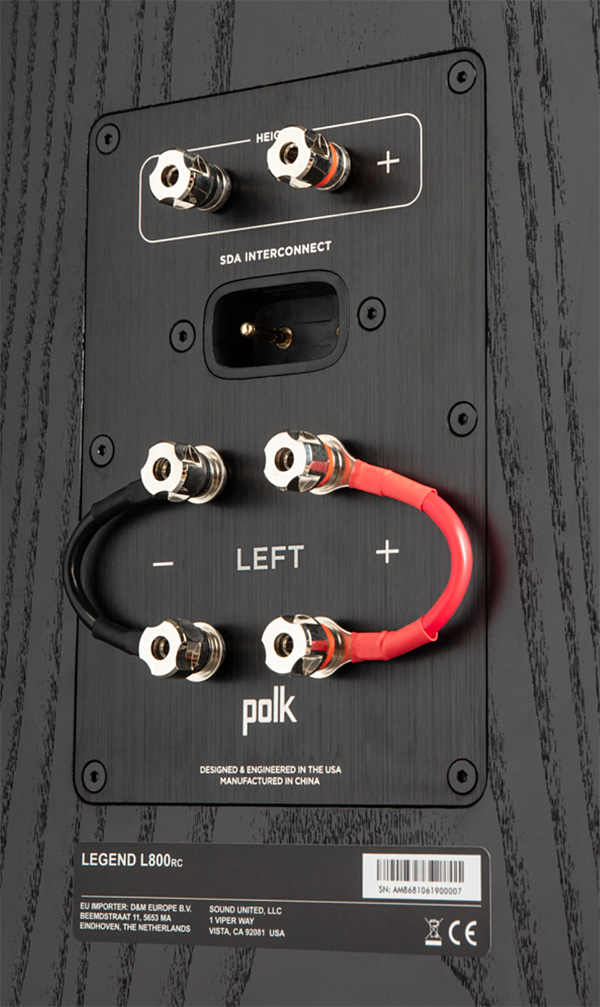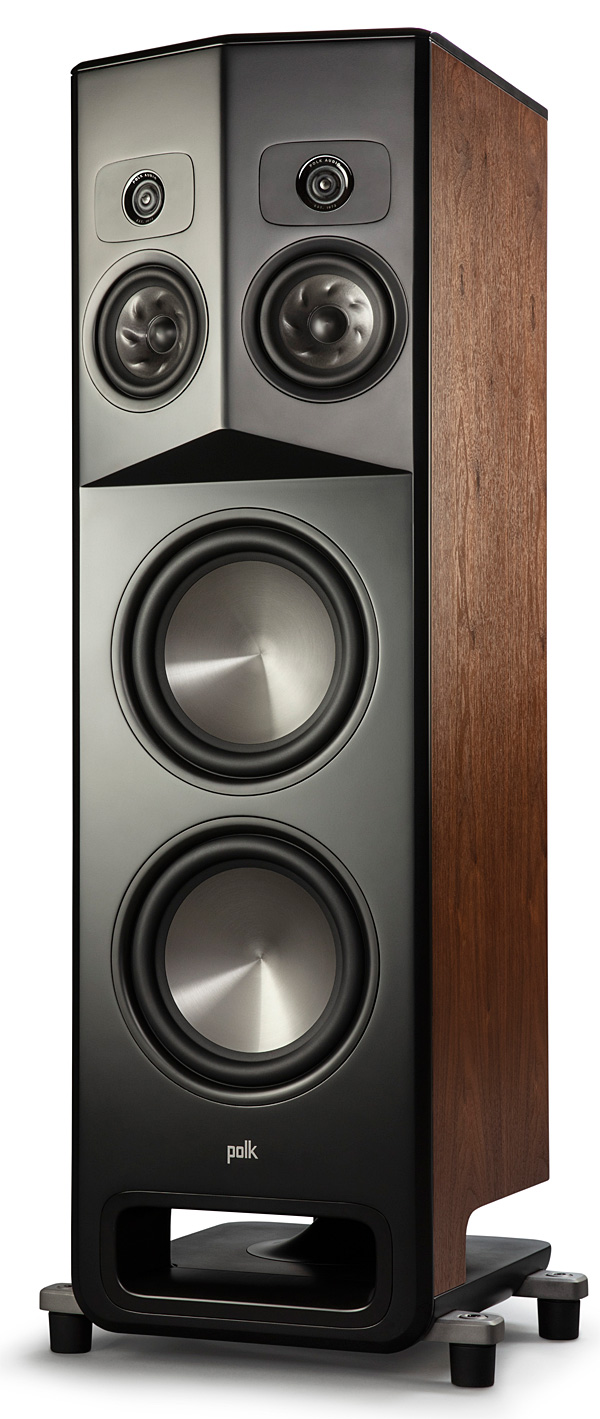Polk Audio Legend L800 Loudspeaker Review Page 2
Sources that I used for my listening included a Panasonic DMP-UB900 Ultra HD Blu-ray player for CD playback and a MacBook Pro running Roon to stream music from Tidal and Qobuz. I also used a Hegel Music Systems H390, a stereo integrated amplifier that's spec'd at 2 x 250 watts into 8 ohms, but compatible with speakers down to 2 ohms. While Polk Audio states the L800 towers can be paired with amplifiers rated for anywhere from 25-300 watts per channel, the speaker's 4 ohm nominal impedance indicated to me that opting for more power would be a good idea, and the Hegel H390 proved to be a more than suitable match.

Performance
Since SDA-Pro is a key feature of the L800 towers, I first listened to a few tracks Polk Audio has used for its SDA-Pro demos, and also went searching through my own collection for content that would allow the tech to work its magic. The first cut I played was an audiophile classic, "Time," from Pink Floyd's The Dark Side of the Moon (CD layer of a multichannel hybrid SACD). A collage of clock chimes the song kicks off with literally exploded, the sound freed from the speakers and wrapping well to the left and right boundaries of my room and seemingly around my head. The effect was surround sound-like, but also free of front-to-rear continuity gaps that can accompany listening to multichannel music on a 5.1 system.
As the chimes in "Time" transitioned to a constant ticking, the sound emanated from a precise location directly between the speakers. This was followed by a huge wash of bass that the dual 10-inch woofers on the L800s delivered with impressive extension and power. The tom-tom flourishes contributed by drummer Nick Mason, meanwhile, floated down from impossibly high- and deep-seeming points in my listening room. While the effect of all this 1970s recording studio wizardry was dazzling, the L800's presentation was in no way artificial or enhanced; I experienced the same "Time" I'm used hearing, but the sonic image now came across as wider, bigger, more 3D.
To confirm the naturalness of the L800's SDA-Pro-enabled sound, I played Ray LaMontagne's "Three More Days" from Till the Sun Turns Black, a CD I'm very familiar with that has a consistently expansive stereo mix, though not one that extends into Pink Floyd territory. The tightly centered placement of vocals, rhythm guitar, and electric bass in the mix as usual provided a firm foundation for the track. But the guitar leads extended out much further than I'm used to hearing with my regular speakers, and the horns in particular came across as notably tall and wide, with a sense of dynamic ease that I found very appealing. Same as with the Floyd track, I experienced a "wraparound" effect, though there was nothing gimmicky or unnatural about the presentation.
Leaving the natural world completely behind, I next played an electronic music track, Squarepusher's "The Exploding Psychology," from his Go Plastic CD. I've always been impressed by the ability of this cut, which is packed with a dense expanse of bloops and blips, to push the sound- staging limits of any speakers I happen to be listening with. The L800s painted the track's electronic landscape in a strikingly vivid manner, with sound reverberating not just beyond the physical confines of the speakers but also seeming to erase the boundaries of the room's ceiling and walls. A battery of synthesized beats in the song's mid-section came across as highly dynamic, with deep-reaching bass that could be felt as well as heard.

While SDA-Pro sure can make listening fun, it's also true that not all recordings contain the spatial cues necessary to make them a showcase for the technology. Fortunately, the L800s have a neutral sonic balance that makes them a good match for most music. Listening to "For My Crimes," (16-bit/44.1kHz Qobuz stream) a folky acoustic track by Boston-based singer-song- writer Marissa Nadler from her album of the same name, the vocals were presented cleanly and with excellent focus and good texture. The swells of cellos and wispy background vocals in the song's chorus were impressively full-sounding, and I experienced the same sense of dynamic ease that I heard on the Ray LaMontagne track. On this and some other music I listened to, I felt the sound could be borderline bright, but that judgement was highly dependent on the content. If anything, I found the L800s to have a revealing presentation that exposed harsher-sounding tracks for what they are rather than glossing them over with overly smooth treble response.
Polk Audio's flagship towers continued to impress when I used them for classical music listening. When I next streamed Estonian composer Arvo Pärt's De Profundis as performed by the Hilliard Ensemble, (Qobuz, 16/44.1), the choral parts were rendered with excellent clarity and I heard a good sense of layering between the massed voices, organ, and percussion. The ambience of the space (captured beautifully on this ECM release) came through in a realistic manner that allowed me to appreciate the not just the music, but the setting where the recording was made.
Conclusion
Polk Audio's flagship Legend series L800 tower is an exceptionally well-built speaker that offers appealingly neutral sound and full-range performance. And at $6,000, it's priced at a level that lets it compete with high-performance towers from other, similarly value-oriented audio companies. While the L800's somewhat bulky design bucks the current trend toward slim speakers, I thought that it looked great in my listening room, where the real wood veneer cabinet blended perfectly with the surrounding environment.
Of course, the speaker's somewhat wide cabinet is necessary for the SDA-Pro to do its work, and SDA-Pro is what provides much of the fun when listening with the L800s. During my time with them, I eagerly scoured my CD and streaming libraries for music that would lend itself well to the stereo image-expanding technology. In many cases I was enthralled by what I heard, and I can say with confidence that anyone else who experiences the L800s will have a great time listening to their collection with fresh ears and a fresh sense of purpose. Polk Audio clearly packed a lot of history, effort, and love into its new statement speaker, and that high level of enthusiasm is reflected in the sound.





























































